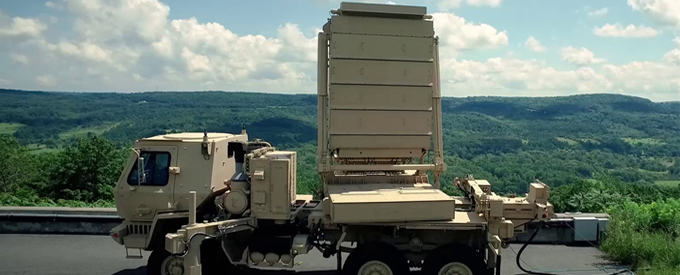2022-03-01
Lockheed’s Radars Designed to Address Evolving Threats
The threats to military and civilian assets are accelerating in volume, diversity, and ferocity every day. In this frenetic environment, armies need radar systems that can protect various mission types and adapt to an ever-changing landscape.
On the battlefield, when each second counts, the ability to detect and identify missiles, rockets and enemy aircraft is critical to survival. Soldiers face an ever-increasing number of complex challenges underlying the need for rapid modernisation of technology and capabilities.
Lockheed Martin has anticipated this new dynamic and built a portfolio of software-based radar systems that can thrive in the digital age.
Functioning of Radars
Radars transmit and receive high-frequency radio waves to detect and track things that you may not be able to see with a naked eye.
The idea is to Identify, Track, Decide.
Radar stands for Radio Detecting and Ranging and as indicated by the name, it is based on the use of radio waves. Radars send out electromagnetic waves similar to wireless computer networks and mobile phones. The signals are sent out as short pulses which may be reflected by objects in their path, in part reflecting back to the radar. When these pulses intercept obstacles, part of the energy is scattered back to the radar.
The data collected via the radars helps operators make informed decisions about “what’s next.” In national defence, radars are imperative to the security of armed forces and civilians because they provide early warning against adversarial threats.
How Do Radars Work?
1. Transmit: Radars send out narrow beams of electromagnetic radio waves in short or long pulses via a transmitter.
2. Reflect: Those waves can be intercepted and reflected by objects – perhaps a metal object, like an aluminium-skinned plane or missile, or a fluid object such as precipitation. The reflection of the waves helps radar operators determine many features of that object – distance, direction, speed, shape, range, etc.
For example, Lockheed Martin’s TPY-4 uses a rotating Active Electronically Scanned Array (AESA) with Gallium Nitride (GaN) transmitter technology to run multiple missions simultaneously, while operating in contested electromagnetic environments, and detect and track with greater efficiency.
3. Receive: The receiver accepts the returned energy of the radio waves and measures the time elapsed since the transmission. The distance, or range, of that object is calculated by measuring the total time the radar signal takes to make the trip to the target and back. By measuring the location of a target over time, the target’s recent track can be determined; once established, the future path can be predicted.
4. Detect, Classify, & Act: All this digital data is processed in real time to determine the range and trajectory of detected objects, as well as their threat level. Are we simply tracking a bird? Or is it an unmanned aerial vehicle, a cruise missile or a fighter jet? Is it friendly or is it hostile?
All this information allows the operator to act accordingly.
Lockheed’s radar systems specialise in counter target acquisition, early warning, situational awareness, and integrated air and missile defence.
Lockheed Martin radars are designed with the highest degree of commonality and fully integrated systems. They can operate in all environments, are available in highly mobile configurations, and are deployed worldwide. The company’s radars are now the choice of more than 45 nations on six continents.
Sentinel A4 Contract
The United States Army’s Sentinel A4 programme is a solid example of such a programme accomplishing several milestones months ahead of schedule.
The U.S. Army awarded Lockheed Martin a US$281 million contract to develop the Sentinel A4 system in September 2019.
Since then, the programme has achieved several milestones ahead of schedule, including System Requirements Review/ System Functional Review (SRR/SFR), Preliminary Design Review (PDR), and the Critical Design Reviews (CDR).
In September of 2020, the Sentinel A4 radar array prototype became operational, five months ahead of schedule. Just over one year after the Army awarded Lockheed Martin the initial contract for the system, the Sentinel A4 radar array prototype became operational.
The brand-new Sentinel A4 air and missile defence radar will provide improved capability in contested environments against cruise missiles, unmanned aerial systems, rotary wing and fixed wing aircraft, and rocket, artillery, and mortar threats.
The Sentinel A4 includes enhanced surveillance, detection, and classification capabilities to protect U.S. Army manoeuvre formations. This level of technology is a game changer for the U.S. troops, allowing soldiers to operate in a more secure warfighting environment, improving capabilities against multiple evolving threats.
Sentinel A4 is designed for multi-domain operations and to seamlessly connect with the Army’s Integrated Battle Command System. It will have the flexibility to perform multiple missions for the commanders in the battlefield. Unlike large static type radars, the Sentinel A4 is highly mobile and offers the manoeuvre commander the agility to adjust sensor coverage based on changing battlefield conditions.
Open Architecture
Lockheed Martin’s open architecture is the cornerstone of the radar system’s design and will allow for future upgrades that not only extend the life of the radar, but also address evolving threats over the next 40 years.
The company focussed on the core building blocks, those repeating architecture elements that provide the real radar capability, and then scaled from there to bring up the mechanical structures around it.
Lockheed Martin has also invested significantly in the advancement of its radar technology, including its automated manufacturing processes, which improves quality and leads to cost reduction.
The U.S. Army and Lockheed Martin have built a tremendous partnership for the Sentinel A4 programme. Despite current global conditions, the collaboration between the Army and Lockheed Martin teams and their singular focus on mission success milestones has resulted in an accelerated timeline.
The new air and missile defence radar will provide improved capability in contested environments against cruise missiles, unmanned aerial systems, rotary wing and fixed wing aircraft, and rocket, artillery, and mortar threats. This includes enhanced surveillance, detection, and classification capabilities to protect U.S. Army manoeuvre formations.


No Comments